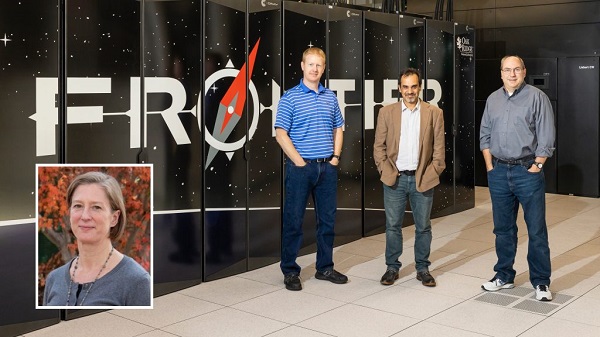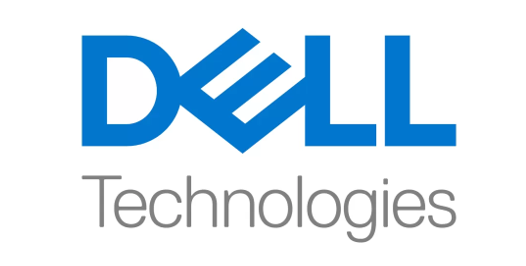
Sarp Oral, Ross Miller and Mike Brim with Frontier supercomputer at ORNL. Inset: Senior researcher Kathryn Mohror from Lawrence Livermore National Lab.They are part of the multi-institution team developing UnifyFS. Photo credit: Carlos Jones/ORNL.
Oak Ridge, TN — A research team from the Department of Energy’s Oak Ridge and Lawrence Livermore national laboratories won the first Best Open-Source Contribution Award for its paper at the 37th IEEE International Parallel and Distributed Processing Symposium, or IPDPS, which was held in St. Petersburg, Florida, on May 15-19.
The paper, “UnifyFS: A User-level Shared File System for Unified Access to Distributed Local Storage,” was authored by Michael Brim, Seung-Hwan Lim, Ross Miller, Swen Boehm and Sarp Oral of ORNL with Adam Moody, Cameron Stanavige and Kathryn Mohror of LLNL. The paper presents UnifyFS, the product of a multidisciplinary, multi-institutional software development project that began in 2017. The open-source software is a client-level file system that creates a shared namespace for distributed storage resources to allow an application to read and write to node-local storage the same way it would with a parallel file system. This alleviates demand on parallel file systems and reduces I/O bottlenecks that can occur with large-scale applications.
Every year, IPDPS selects a few exceptional papers and recognizes one with a Best Paper Award. This is the first year the conference has offered a Best Open-Source Contribution Award for papers with “open-source tool and dataset artifacts relevant to the parallel and distributed computing community.”
“I am so happy that the IPDPS conference has chosen to recognize the importance of making HPC research software open source and robust,” said Mohror. “Even though UnifyFS is cutting-edge software, our team has consistently dedicated significant effort toward making UnifyFS user-friendly and production ready. I am very proud of our team and delighted for us to have won the award.”
“This award is a testament to all the excellent work being done under the Exascale Computing Project to take research prototypes and deliver production-quality software for use on exascale machines,” said Brim. “For UnifyFS, the research results in our IPDPS paper would not have been possible without several years of open-source software development and testing.”



